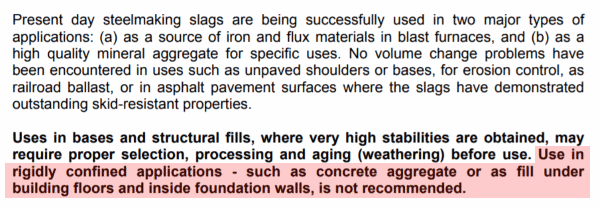phamENG
Structural
- Feb 6, 2015
- 7,550
I'm working on the design of an industrial floor slab subject to general loading of extremely heavy stacks of material (4000psf give or take in loaded areas). I'm going in with a reinforced concrete slab on grade, but obviously the critical piece of the puzzle is what's happening underneath. The current slab that's being replaced has deflected more than 6" over an 80' "span" resulting in ponding of rain water that makes its way in through doors and serviceability problems for equipment. So we'll be removing the better part of 18 to 24" of clayey muck from under the slab and replacing it with compacted steel furnace slag (have access to large quantities on the cheap, so that's the material of choice).
My question is this: what kind of values for modulus of subgrade reaction can I expect from properly compacted furnace slag? I'll have it tested and set a limit on final material storage numbers based on the final conditions, but I want to make sure it's feasible to hit my target.
Thanks for any input.
My question is this: what kind of values for modulus of subgrade reaction can I expect from properly compacted furnace slag? I'll have it tested and set a limit on final material storage numbers based on the final conditions, but I want to make sure it's feasible to hit my target.
Thanks for any input.


![[idea] [idea] [idea]](/data/assets/smilies/idea.gif)